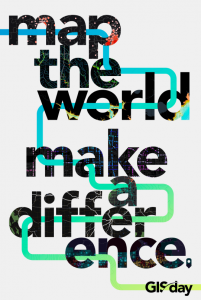In celebration of GIS Day, Wednesday, November 17, 2021, the Center for Digital Heritage and Geospatial Information (CDHGI) in the USF Libraries is hosting a GIS Virtual Project Gallery featuring select GIS projects created by students, faculty, and staff of the University of South Florida.
Join us in discovering the many ways that GIS can support discovery. Project submissions include work from several student efforts, collections and storytelling from the USF Libraries Special Collections, historic preservation research from the Digital Heritage and Humanities Collections (DHHC) in the CDHGI, and research presentations from the School of Geosciences, the USF Water Institute, and USF Facilities Management.
Highlighted projects include:
-
- The Florida COVID-19 Hub, a guide to GIS data, mapping tools, news, and related information concerning Florida’s response to the COVID-19 pandemic. The hub demonstrates how geospatial science can be leveraged to respond to research and data sharing and visualization needs. It is a valuable GIS tool for researchers looking for historical COVID-19 data.
- The USF Public Art Collection, which maps and tells the stories of USF’s campus art installations. The Public Art program focuses on site responsive works, typically resulting in the creation of places like plazas, gardens, and courtyards.
- The Habitat Resiliency To Climate Change in the Coastal & Heartland National Estuary Partnership Program, which predicts the changes in vegetative communities caused by climate change. Data includes topography, vegetation and habitat, tides, projected sea-level rise from NOAA (2017), areas of freshwater influence, and habitat specific accretion rates.
- The Florida Environment & Natural History (FLENH) Portal, an expansive digital gateway to the environmental science and natural history collections available at USF Libraries. The portal showcases our vast archival, book, and data collections, as well as decades of student and faculty publications.
- Tampa Through Time, which connects collections of important historic images, maps, and City Directories to create a virtual presentation of Tampa through time. This advanced geospatial mapping tool reveals Tampa’s historical landscapes in relation to the present.
There are also a number of other diverse projects that showcase how you can use GIS for research, teaching, archival storytelling, and other data presentation and visualization needs.
For more information on applications with GIS, or for learning more about the tools and applications available to the USF Community, head to gis-usflibrary.hub.arcgis.com/. For questions related to GIS software availability at USF, please contact GIS Manager, Benjamin Mittler, at libraryGIS@usf.edu.
